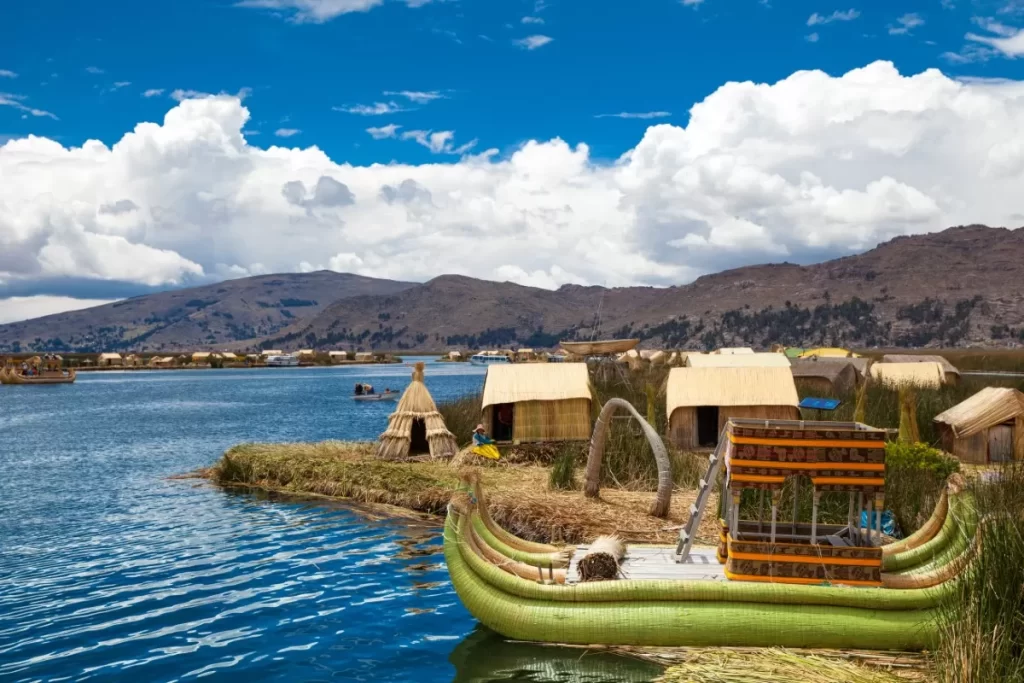Peru is famous for its ancient ruins, vibrant culture, and breathtaking landscapes. One of its most fascinating wonders is the Floating Islands of Lake Titicaca. This high-altitude lake, situated at the border between Peru and Bolivia, is home to the Uros people. They build their entire way of life on floating islands made from reeds. These man-made islands offer a glimpse into an ancient tradition and provide an unforgettable travel experience.

What Are the Floating Islands?
The Uros Floating Islands are a collection of more than 80 man-made islands, all constructed from totora reeds that grow abundantly in the shallow parts of Lake Titicaca. The Uros people have lived on these islands for centuries, maintaining their unique culture and lifestyle. Each island can support a small community, usually consisting of just a few families. The reeds form the base of the islands and serve to build houses, boats, and even furniture. You can learn more about the construction of these islands from UNESCO’s World Heritage site.
The Unique Lifestyle of the Uros People
For hundreds of years, the Uros people have lived on these floating islands, originally using this unique habitat as a way to avoid conflicts with neighboring tribes. Today, they continue to uphold their traditional lifestyle, relying on fishing, bird hunting, and tourism as their primary means of livelihood. Visitors can feel that warm welcome and receive a tour of the islands, where they can witness firsthand the simple yet ingenious way of life. You can even take a ride on a traditional totora reed boat. Learn more about these ancient vessels on BBC’s Travel Section.
facts about the islands
One of the most intriguing aspects of the Uros Islands is their construction. The process begins by cutting large blocks of totora roots, which naturally float. They tie these blocks together to create a base. They place layers of cut reeds on top and continuously add new layers as the old ones rot from exposure to water. This constant renewal process makes the islands feel soft and springy underfoot, creating a unique sensation for visitors. Learn more about the environmental aspects of this reed ecosystem from the Smithsonian Magazine.

A Must-See for Travelers
If you’re planning to visit Peru, adding Lake Titicaca and the Floating Islands to your itinerary is a must. The combination of stunning natural beauty and cultural heritage makes it one of the most interesting destinations in the country. You can take a boat tour from the city of Puno, offering an up-close view of the islands and their inhabitants. Many tours also include overnight stays, giving travelers the chance to experience the peaceful life on the water. To learn more about Puno and Lake Titicaca, visit Lonely Planet’s guide.
Best Time to Visit Lake Titicaca
The best time to visit Lake Titicaca is during the dry season, which runs from May to October. During this period, the weather is clear and sunny, making boat trips across the lake more enjoyable. However, the high altitude of around 3,800 meters causes temperatures to drop sharply at night. Be sure to pack warm clothing. For more information about visiting Lake Titicaca, check out National Geographic’s Travel Tips.
Responsible Tourism: Supporting the Uros Communities
Tourism plays a vital role in the Uros people’s economy. Visitors can support this community by purchasing local handicrafts and helping preserve their culture. However, it’s essential to approach this sensitive environment with respect. Make sure your visit promotes sustainable tourism and doesn’t disrupt the delicate balance of life on the islands. For more insight into responsible tourism in Peru, visit Responsible Travel.


